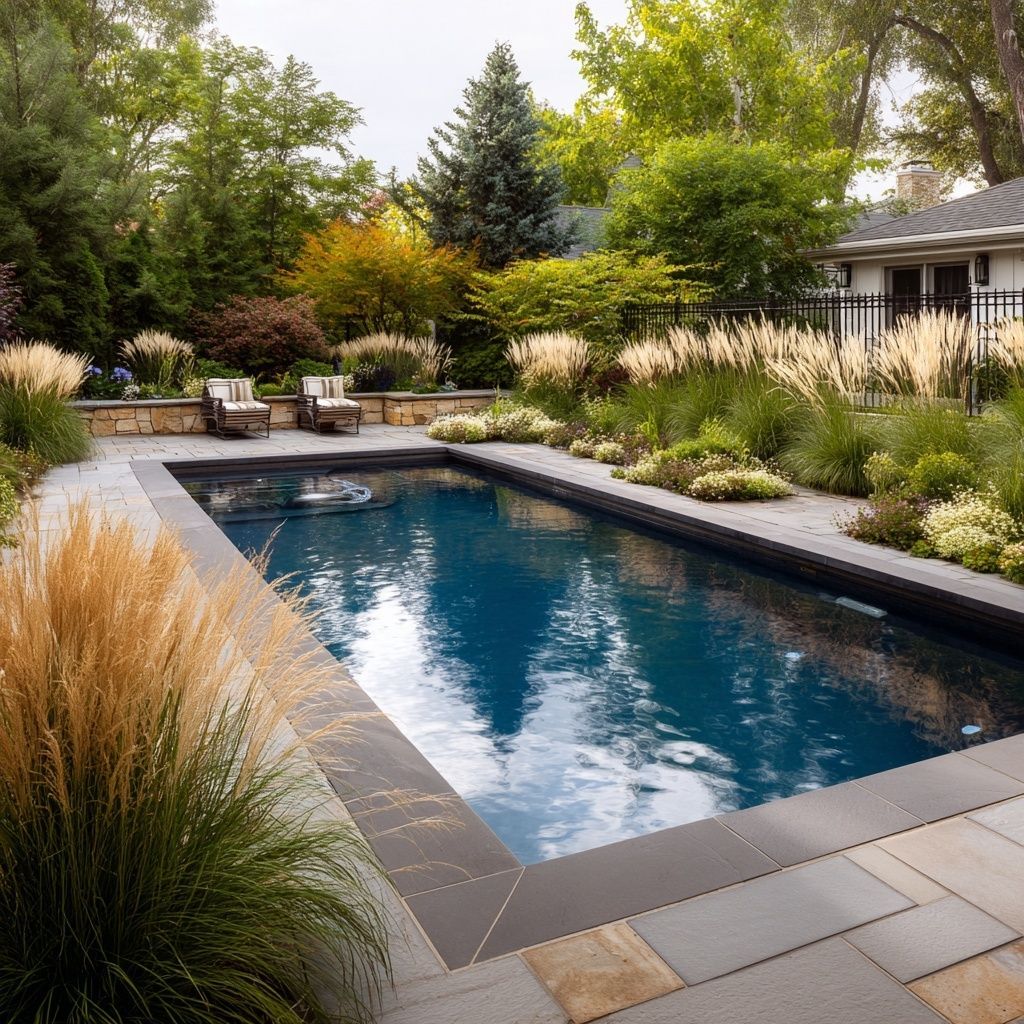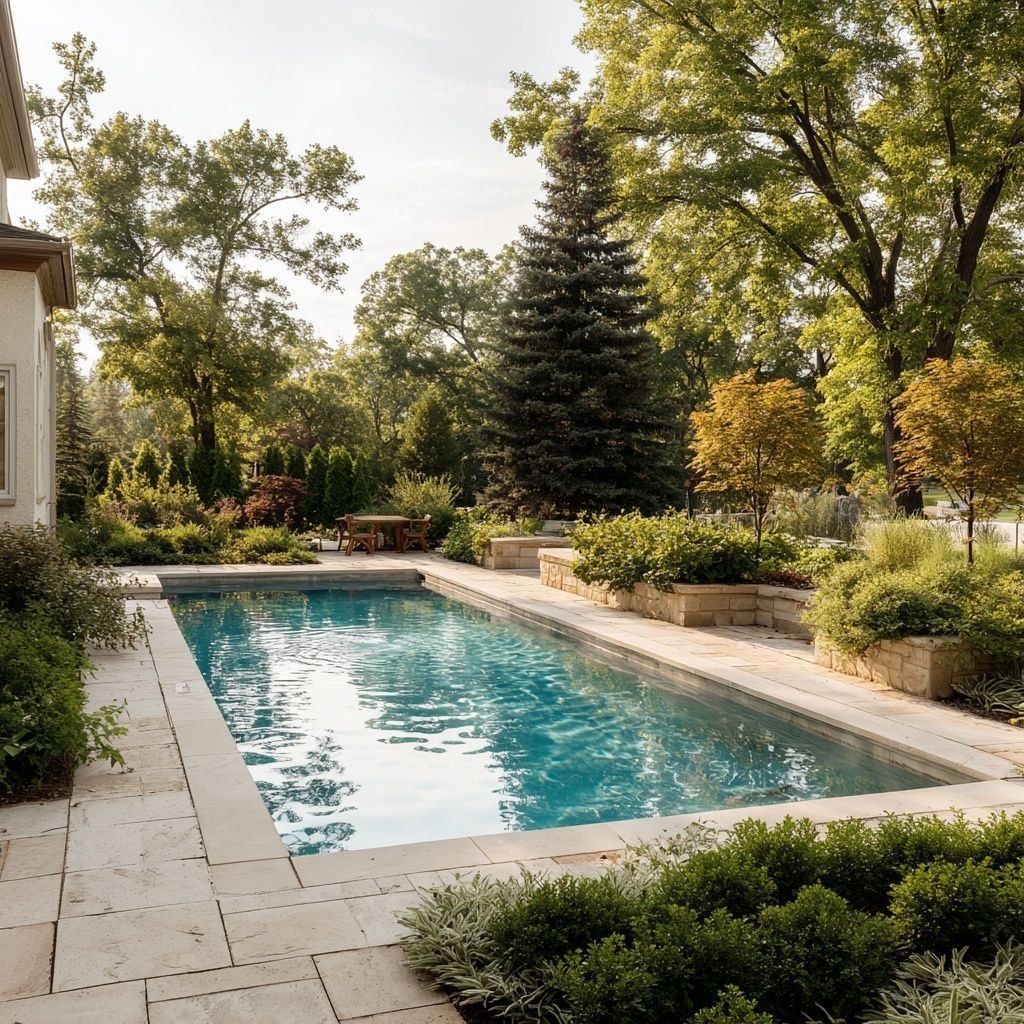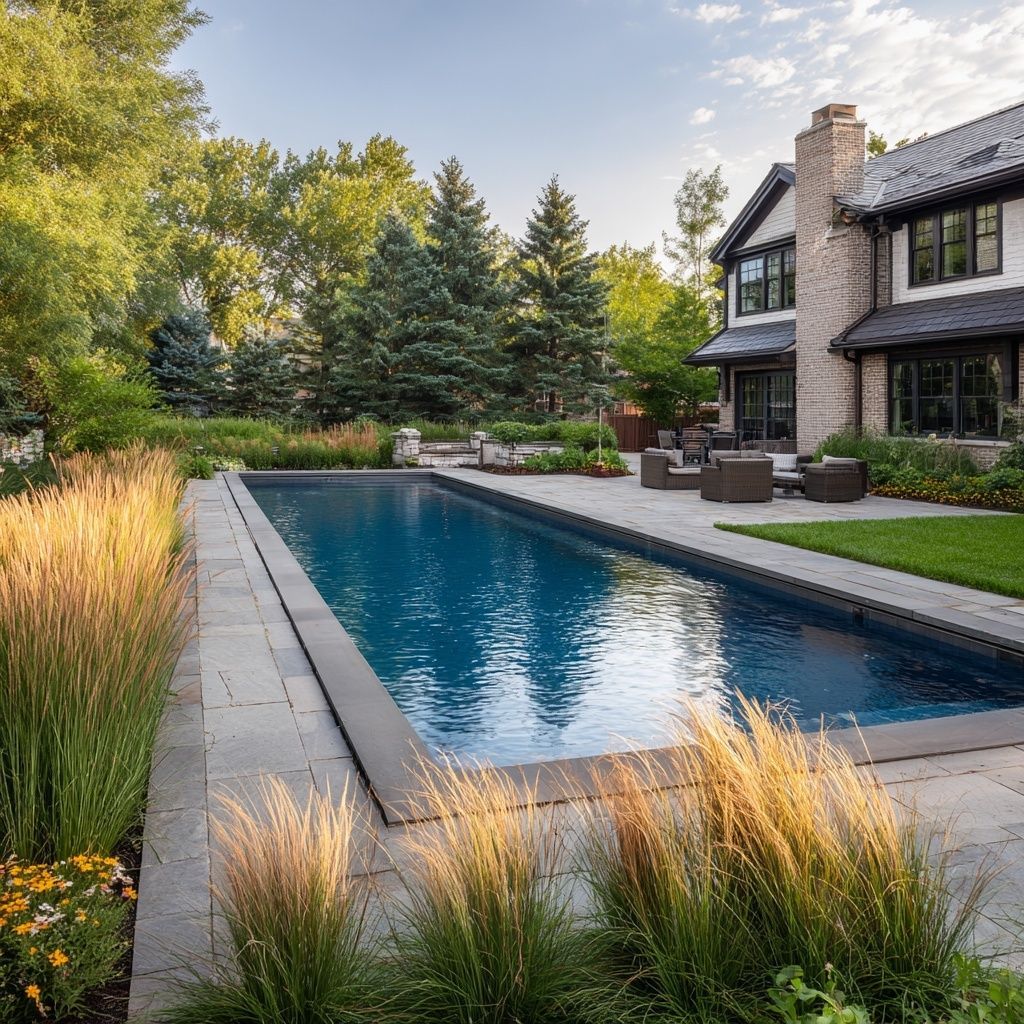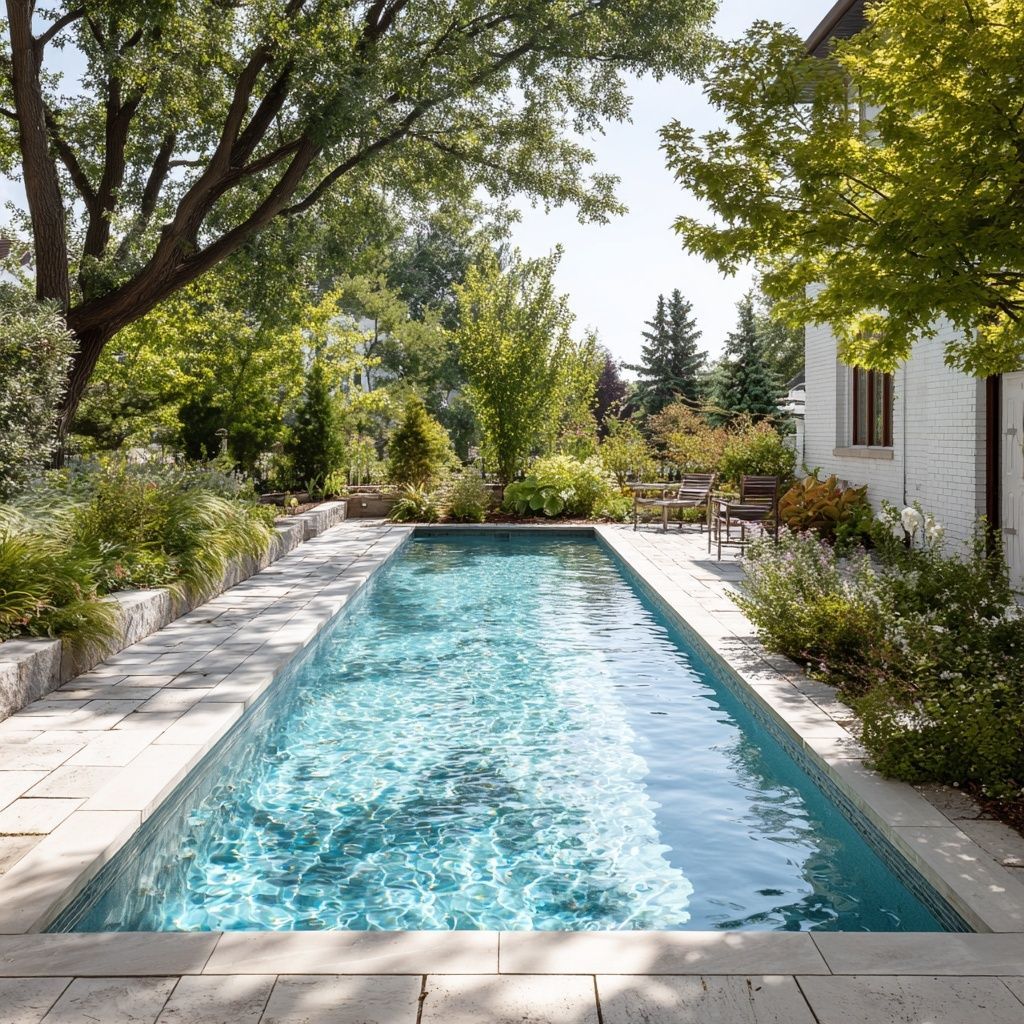Smart Drainage for Patios and Pools in Edina
Smart Drainage for Patios and Pools in Edina
In Edina, I’ve seen too many beautifully built patios fail because no one thought about where the water would go. Homeowners spend thousands on stone, lighting, and outdoor kitchens, only to see pavers heave, joints separate, and low spots turn into slick puddles after a few Minnesota winters. It’s not that the patios weren’t built well. It’s that they weren’t designed to manage what this climate dishes out — freeze-thaw cycles, sudden downpours, and soil that just doesn’t drain like you’d think it would.
I’ve worked in this area long enough to know the ground in Edina can surprise you. Many homes sit on older lots with mature trees and complex slopes. Some yards drain toward the house, while others send runoff straight toward the neighbor’s property. Water doesn’t care how expensive your patio is — it will find the path of least resistance every single time.
That’s why smart drainage isn’t an upgrade. It’s the foundation that keeps your investment looking and performing like new for years to come. In this article, I’ll walk you through how we design drainage systems that work hand-in-hand with patios and pools in Edina, what goes wrong when they’re overlooked, and how to make sure your project lasts through decades of Minnesota weather.

Why Drainage Is the Foundation of Every Great Patio
Every great outdoor space starts beneath the surface. The best-looking patios I’ve ever seen — and built — have one thing in common: the water moves exactly where it’s supposed to go.
When water sits, it causes problems you can’t always see right away. The base under the pavers softens, then freezes and expands, pushing the surface upward. Joints open up, the patio loses its tight, finished look, and soon you’ve got trip hazards or pooling near the house. I get calls every year from homeowners whose patios look less than five years old but already need sections torn out and rebuilt because no drainage plan was considered at the start.
In Edina, this happens even more often because of how properties are laid out. You’ve got tree-lined streets with older foundations, walk-out lots, and tight setbacks where water naturally flows toward structures. In many of these neighborhoods — Morningside, Hilldale, Rolling Green — grading can be tricky. Add in the thick clay subsoils found in pockets of the city, and it’s easy to see why water hangs around longer than it should.
That’s why I design every patio with a subtle slope. Between one-quarter and one-eighth of an inch per foot is the sweet spot for moving water away without making it feel like you’re walking downhill. It’s something most people never notice visually, but they notice the results — a patio that stays dry, level, and safe.
Good drainage also preserves appearance. Without standing water, you avoid that white haze (efflorescence) that can develop on pavers. The colors stay richer, the joints stay clean, and your investment continues to look like a showpiece rather than something you need to fix every spring.
Pro Tip: On a big project, I always plan drainage first. If you build it right from the start, you’ll never have to think about it again.

Smart Systems for Patios and Pools
When we talk about “smart” drainage, we’re talking about a system that’s both functional and invisible. You shouldn’t have to see where the water goes — but you should be confident it’s handled.
For patios and pool decks, that starts below the surface. One of the most effective tools we use is drain tile, a 4-inch perforated pipe — either corrugated or PVC — wrapped in a silt sock to keep sediment from clogging the holes. This creates an underground channel that lets water weep into the pipe and carry it away before it ever becomes a problem.
In some situations, especially with large areas or heavier soils, we’ll step up to a French drain. That involves a deeper trench and a rock backfill that allows surface and subsurface water to move more freely. It’s more thorough but also more labor-intensive since we’re removing a lot of soil and replacing it with gravel. Both systems are valuable, but they serve different needs.
In heavy clay soil, we often use a hybrid: drain tile with a sandy backfill mix — about 50/50 sand and topsoil. That mix allows surface water to reach the pipe faster, instead of getting trapped above compacted clay. It’s one of the best ways I’ve found to dry out a saturated yard without tearing everything apart.
Around pools, drainage becomes even more critical. You never want water to get below the deck or close to the pool walls. Super-saturated soils can cause the ground to heave during winter or, worse, put pressure on the pool shell. We install slot or channel drains between the house and pool where two slopes meet — that low spot where water naturally wants to collect. These drains quietly move the water out without disrupting the design.
Pro Tip: Surface drains should only be used when absolutely necessary. The best systems are the ones you never see.

Designing for Edina’s Unique Challenges
Edina’s mix of classic architecture and luxury remodels makes it one of the most interesting places to design outdoor spaces. It also means no two properties drain the same way.
Older homes, especially those near the Country Club neighborhood, were built before modern grading standards existed. You’ll find patios that slope toward foundations or low spots created by decades of minor landscaping changes. These problems don’t always show up until a heavy rain hits, and by then it’s too late.
That’s why every design starts with a site evaluation. I look at how water moves not just across the surface but below it. In many Edina yards, mature tree roots and existing hardscapes limit where we can dig. We use low-profile drainage systems that fit within tight areas without disrupting the landscape.
Tight lot lines can also make drainage a shared issue. If your neighbor’s property sits higher, runoff may head straight for your fence line. A smart design doesn’t just protect your patio — it helps you stay on good terms with your neighbors by ensuring water is managed entirely within your property.
Luxury homes in Edina also bring another layer of complexity: aesthetics. Homeowners want spaces that feel natural, not engineered. So we hide drainage systems beneath decorative gravel borders, integrate channel drains into stone patterns, and design subtle grade changes that move water invisibly. When done right, you’ll never know it’s there — but you’ll definitely notice when it’s not.
Pro Tip: Good drainage doesn’t just protect your patio, it keeps peace with your neighbors too.
Building with Long-Term Value in Mind
In my experience, homeowners in Edina aren’t just looking for a beautiful backyard. They want something that works — season after season, without constant maintenance or repair. That’s what smart drainage is all about.
When we finish a project, I want to be able to drive by ten years later and see it looking as good as the day we installed it. That’s not luck. It’s because every system we design is built with long-term performance in mind.
Before I start any build, I walk homeowners through the design plan and drainage map. It should include:
- The slope and grading plan, measured precisely on-site.
- Locations of drain tile runs and outlet points.
- How the patio, landscaping, and pool deck all connect hydrologically.
- Access points for future maintenance.
The best drainage systems are the ones you never think about again. They’re buried beneath the surface, working quietly while you enjoy your space.
If you’re building or upgrading a patio or pool area in Edina, make sure your contractor talks about drainage first, not last. A little extra design time upfront can save you thousands in repairs later.

FAQs
How do I know if my current patio has poor drainage?
Look for puddling after rain, shifting pavers, or white residue on the surface. Those are red flags. In Edina, the freeze-thaw cycle accelerates damage fast. If you notice your patio feels uneven or the joints keep opening up, water may be saturating the base. A drainage inspection can confirm what’s happening below the surface and whether adjustments or replacements are needed.
Can drainage be added under an existing patio or pool area?
It can, but it takes precision. In older Edina homes, we sometimes add drain tile runs alongside low points or regrade adjacent areas to push water away. It’s a surgical process — we don’t want to disturb the structure you already have. The key is developing a full drainage plan that keeps the correction work subtle and effective.
Do visible drains ruin the look of a high-end patio?
Not if they’re designed right. Slot and channel drains can be integrated cleanly into the stone layout or hidden beneath gravel bands. Most homeowners in Edina prefer a seamless look, so we design drains that disappear into the hardscape. You get all the function, without any visual clutter.










